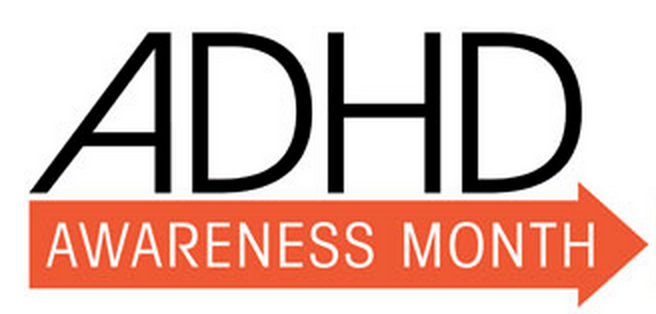October 20th, 2015 by pio@shoreline.edu
In honor of National Disability Employment Awareness Month, the Office of Special Services (OSS) is working to raise awareness of disabilities by offering daily facts and tips about people with disabilities and living with disability. Please take a minute to read and broaden your understanding.
October is Polio Awareness Month
Poliomyelitis (polio) is a highly infectious viral disease, which mainly affects young children. The virus is transmitted person-to-person spread mainly through the faecal-oral route or, less frequently, by a common vehicle (e.g., contaminated water or food) and multiplies in the intestine, from where it can invade the nervous system and can cause paralysis.
Initial symptoms of polio include fever, fatigue, headache, vomiting, stiffness in the neck and pain in the limbs. In a small proportion of cases, the disease causes paralysis, which is often permanent. There is no cure for polio, it can only be prevented by immunization.
Key facts
- Polio (poliomyelitis) mainly affects children under 5 years of age.
- One in 200 infections leads to irreversible paralysis. Among those paralysed, 5% to 10% die when their breathing muscles become immobilized.
- Polio cases have decreased by over 99% since 1988, from an estimated 350,000 cases then, to 359 reported cases in 2014. The reduction is the result of the global effort to eradicate the disease.
- Today, only 2 countries (Afghanistan and Pakistan) remain polio-endemic, down from more than 125 in 1988.
- As long as a single child remains infected, children in all countries are at risk of contracting polio. Failure to eradicate polio from these last remaining strongholds could result in as many as 200,000 new cases every year, within 10 years, all over the world.
- In most countries, the global effort has expanded capacities to tackle other infectious diseases by building effective surveillance and immunization systems.
Polio and its symptoms
Polio is a highly infectious disease caused by a virus. It invades the nervous system, and can cause total paralysis in a matter of hours. One in 200 infections leads to irreversible paralysis (usually in the legs). Among those paralysed, 5% to 10% die when their breathing muscles become immobilized.
Global caseload
Today, only 2 countries in the world remain endemic for the disease–the smallest geographic area in history. Of the 3 strains of wild poliovirus (type 1, type 2, and type 3), wild poliovirus type 2 was eradicated in 1999 and case numbers of wild poliovirus type 3 are down to the lowest-ever levels with the no cases reported since November 2012 from Nigeria.
The above information and more can be found here.
Posted in Announcements Tagged with: national disability month, OSS
October 18th, 2015 by pio@shoreline.edu

In honor of Disability Employment Awareness Month, the Office of Special Services (OSS) is working to raise awareness of disabilities by offering daily facts and tips about people with disabilities and living with disability. Please take a minute to read and broaden your understanding.
“All learning has an emotional base.” — Plato
The ability to express and control our emotions is essential, but so is our ability to understand, interpret, and respond to the emotions of others. Imagine a world where you could not understand when a friend was feeling sad or when a co-worker was angry. Psychologists refer to this ability as emotional intelligence, and some experts even suggest that it can be more important than IQ.
Learn more about exactly what emotional intelligence is, how it works, and how it is measured.
What is Emotional Intelligence?
Emotional intelligence (EI) refers to the ability to perceive, control and evaluate emotions. Some researchers suggest that emotional intelligence can be learned and strengthened, while others claim it is an inborn characteristic.
The Four Branches of Emotional Intelligence
Salovey and Mayer proposed a model that identified four different factors of emotional intelligence: the perception of emotion, the ability reason using emotions, the ability to understand emotion and the ability to manage emotions.
- Perceiving Emotions: The first step in understanding emotions is to perceive them accurately. In many cases, this might involve understanding nonverbal signals such as body language and facial expressions.
- Reasoning With Emotions: The next step involves using emotions to promote thinking and cognitive activity. Emotions help prioritize what we pay attention and react to; we respond emotionally to things that garner our attention.
- Understanding Emotions: The emotions that we perceive can carry a wide variety of meanings. If someone is expressing angry emotions, the observer must interpret the cause of their anger and what it might mean. For example, if your boss is acting angry, it might mean that he is dissatisfied with your work; or it could be because he got a speeding ticket on his way to work that morning or that he’s been fighting with his wife.
- Managing Emotions: The ability to manage emotions effectively is a crucial part of emotional intelligence. Regulating emotions, responding appropriately and responding to the emotions of others are all important aspect of emotional management.
According to Salovey and Mayer, the four branches of their model are, “arranged from more basic psychological processes to higher, more psychologically integrated processes. For example, the lowest level branch concerns the (relatively) simple abilities of perceiving and expressing emotion. In contrast, the highest level branch concerns the conscious, reflective regulation of emotion” (1997).
A Brief History of Emotional Intelligence
- 1930s – Edward Thorndike describes the concept of “social intelligence” as the ability to get along with other people.
- 1940s – David Wechsler suggests that affective components of intelligence may be essential to success in life.
- 1950s – Humanistic psychologists such as Abraham Maslow describe how people can build emotional strength.
- 1975 – Howard Gardner publishes The Shattered Mind, which introduces the concept of multiple intelligences.
- 1985 – Wayne Payne introduces the term emotional intelligence in his doctoral dissertation entitled “A study of emotion: developing emotional intelligence; self-integration; relating to fear, pain and desire (theory, structure of reality, problem-solving, contraction/expansion, tuning in/coming out/letting go).”
- 1987 – In an article published in Mensa Magazine, Keith Beasley uses the term “emotional quotient.” Some suggest that this is the first published use of the phrase, although Reuven Bar-On claims to have used the term in an unpublished version of his graduate thesis.
- 1990 – Psychologists Peter Salovey and John Mayer publish their landmark article, “Emotional Intelligence,” in the journal Imagination, Cognition, and Personality.
- 1995 – The concept of emotional intelligence is popularized after publication of psychologist and New York Times science writer Daniel Goleman’s book Emotional Intelligence: Why It Can Matter More Than IQ.
Measuring Emotional Intelligence
“In regard to measuring emotional intelligence – I am a great believer that criterion-report (that is, ability testing) is the only adequate method to employ. Intelligence is an ability, and is directly measured only by having people answer questions and evaluating the correctness of those answers.” –John D. Mayer
- Reuven Bar-On’s EQ-i
A self-report test designed to measure competencies including awareness, stress tolerance, problem-solving, and happiness. According to Bar-On, “Emotional intelligence is an array of noncognitive capabilities, competencies, and skills that influence one’s ability to succeed in coping with environmental demands and pressures.”
- Multifactor Emotional Intelligence Scale (MEIS)
An ability-based test in which test-takers perform tasks designed to assess their ability to perceive, identify, understand, and utilize emotions.
- Seligman Attributional Style Questionnaire (SASQ)
Originally designed as a screening test for the life insurance company Metropolitan Life, the SASQ measures optimism and pessimism.
- Emotional Competence Inventory (ECI)
Based on an older instrument known as the Self-Assessment Questionnaire, the ECI involves having people who know the individual offer ratings of that person’s abilities in several different emotional competencies.
The above information and more can be found here.
Posted in Announcements Tagged with: disability awareness month, OSS
October 16th, 2015 by pio@shoreline.edu

In honor of Disability Employment Awareness Month, the Office of Special Services (OSS) is working to raise awareness of disabilities by offering daily facts and tips about people with disabilities and living with disability. Please take a minute to read and broaden your understanding.
October is National Depression Education & Awareness Month!
October is National Depression Education and Awareness Month, and it’s the perfect time to shine a light on what has been called “the common cold” of mental illness. Depression affects more than 19 million Americans each year. This figure includes the following types of depression:
- Major depressive disorder (also called major depression or clinical depression)
- Manic depression (called bipolar disorder)
- Dysthymia (a milder, but long-term type of depression)
How Does Depression Affect A Person?
Have you ever heard someone remark casually, “Oh, I’m so depressed….”? They may be referring to something other than depression. Depression is not the same as feeling sad or blue. It is not grief, although someone who is grieving may experience it while they mourn a loss.
Depression is a medical condition that has an impact on a person’s daily life. It interferes with someone’s ability to eat, sleep, work and even concentrate. Depression robs sufferers of their ability to engage in hobbies and activities that they previously enjoyed.
Signs And Symptoms Of Depression
Just about everyone has thought or felt one or more of the following signs and symptoms of depression from time to time. If several of the signs on this list seem familiar to you or about someone you love and are persistent, please seek help from a physician. If you are having thoughts about self-harm, go to your nearest Emergency Room immediately.
- Feeling sad, anxious or “empty”
- Irritability or restlessness
- Hopelessness or pessimism
- Feeling guilty or worthless
- Lack of interest or pleasure in former hobbies or interests
- Fatigue or lack of energy
- Trouble concentrating, remembering or making decisions
- Trouble getting to sleep or staying asleep
- Lack of appetite or overeating
- Headaches, digestive disorders or chronic pain that does not respond to treatment
- Suicidal thoughts
Self-Medicating Depression
Self-medicating is never a good idea to “treat” depression. Some people, in an effort to feel better, turn to drugs or alcohol to deal with their symptoms. This will not help to treat the underlying problem, and usually make it worse.
Treatment Options For Depression
The good news is that depression is treatable. There are several types of antidepressant medications available, though it does take several weeks to determine whether a particular medication is working. Patients who have been prescribed a medication are advised to be patient and to give the medicine some time before concluding that it is not helping before asking to switch to something else.
Talk therapy is also used to treat depression and it can be started immediately upon receiving a diagnosis (as long as a therapist can be found). There are no side effects and individual results will vary.
Many people report getting good results with a combination of medication and seeing a therapist for their depression.
The above information and more can be found at www.marylandrecovery.com.
Want to learn more about depression? Here are 10 basic facts:
- Approximately 20 million people in the U.S. suffer from depression every year. That’s more than twice the population of New York City.
- One in four adults will suffer from an episode of depression before the age of 24.
- Women are twice as likely to suffer from depression as men.
- Symptoms of depression can vary, but typically include feelings of guilt and hopelessness, sleep disturbances, appetite changes, difficulty concentrating, lack of energy and fatigue.
- St. John’s Wort, a flowering plant and medicinal herb, has been shown to help with depression in typical cases.
- More than 350 million people of all ages suffer from depression worldwide. That’s more than the entire population of the United States.
- The World Health Organization predicted depression will become the second biggest medical cause of disability in 15 years, second only to HIV/AIDS.
- Depression often occurs when other psychiatric health problems are present, such as post-traumatic stress disorder and anxiety.
- Most prescription antidepressants increase the user’s serotonin, dopamine or norepinephrine levels. Some of the most popular antidepressants are Prozac, Zoloft, Lexapro and Effexor.
- Many famous, creative people suffered from depression, including Robin Williams, Mark Twain, Edgar Allan Poe, Vincent van Gogh, F. Scott Fitzgerald and Jon Hamm.
This list, as well as additional information, can be found at www.ibtimes.com.
Posted in Announcements Tagged with: disability awareness month, OSS
October 14th, 2015 by pio@shoreline.edu

In honor of Disability Employment Awareness Month, the Office of Special Services (OSS) is working to raise awareness of disabilities by offering daily facts and tips about people with disabilities and living with disability. Please take a minute to read and broaden your understanding.
October is ADHD Awareness Month. Here are 7 Facts You Need To Know About ADHD
1. ADHD is Real
Nearly every mainstream medical, psychological, and educational organization in the United States long ago concluded that Attention-Deficit/Hyperactivity Disorder (ADHD) is a real, brain-based medical disorder. These organizations also concluded that children and adults with ADHD benefit from appropriate treatment.
2. ADHD is a Common, Non-Discriminatory Disorder
ADHD is a non-discriminatory disorder affecting people of every age, gender, IQ, religious and socio-economic background.
In 2011, the Centers for Disease Control and Prevention reported that the percentage of children in the United States who have ever been diagnosed with ADHD is now 9.5%. Boys are diagnosed two to three times as often as girls.
Among adults, the Harvard/NIMH National Comorbidity Survey Replication found 4.4% percent of adults, ages 18-44 in the United States, experience symptoms and some disability.
ADHD, AD/HD, and ADD all refer to the same disorder. The only difference is that some people have hyperactivity and some people don’t.
3. Diagnosing ADHD is a Complex Process
In order for a diagnosis of ADHD to be considered, the person must exhibit a large number of symptoms, demonstrate significant problems with daily life in several major life areas (work, school, or friends), and have had the symptoms for a minimum of six months.
To complicate the diagnostic process, many of the symptoms look like extreme forms of normal behavior. Additionally, a number of other conditions resemble ADHD. Therefore, other possible causes of the symptoms must be taken into consideration before reaching a diagnosis of ADHD.
What makes ADHD different from other conditions is that the symptoms are excessive, pervasive, and persistent. That is, behaviors are more extreme, show up in multiple settings, and continue showing up throughout life.
No single test will confirm that a person has ADHD. Instead, diagnosticians rely on a variety of tools, the most important of which is information about the person and his or her behavior and environment. If the person meets all of the criteria for ADHD, he or she will be diagnosed with the disorder.
4. Other Mental Health Conditions Often Occur Along With ADHD
- Up to 30% of children and 25-40% of adults with ADHD have a co-existing anxiety disorder.
- Experts claim that up to 70% of those with ADHD will be treated for depression at some point in their lives.
- Sleep disorders affect people with ADHD two to three times as often as those without it.
5. ADHD is Not Benign
ADHD is not benign. Particularly when the ADHD is undiagnosed and untreated, ADHD contributes to:
- Problems succeeding in school and successfully graduating.
- Problems at work, lost productivity, and reduced earning power.
- Problems with relationships.
- More driving citations and accidents.
- Problems with overeating and obesity.
- Problems with the law.
According to Dr. Joseph Biederman, professor of psychiatry at Harvard Medical School, ADHD may be one of the costliest medical conditions in the United States: “Evaluating, diagnosing and treating this condition may not only improve the quality of life, but may save billions of dollars every year.”
6. ADHD is Nobody’s FAULT
ADHD is NOT caused by moral failure, poor parenting, family problems, poor teachers or schools, too much TV, food allergies, or excess sugar. Instead, research shows that ADHD is both highly genetic (with the majority of ADHD cases having a genetic component), and a brain-based disorder (with the symptoms of ADHD linked to many specific brain areas).
The factors that appear to increase a child’s likelihood of having the disorder include gender, family history, prenatal risks, environmental toxins, and physical differences in the brain.
7. ADHD Treatment is Multi-Faceted
Currently, available treatments focus on reducing the symptoms of ADHD and improving functioning. Treatments include medication, various types of psychotherapy, behavioral interventions, education or training, and educational support. Usually a person with ADHD receives a combination of treatments.
The above information is taken from www.adhdawarenessmonth.org.
Posted in Announcements Tagged with: disability awareness month, OSS
October 13th, 2015 by pio@shoreline.edu

In honor of Disability Employment Awareness Month, the Office of Special Services (OSS) is working to raise awareness of disabilities by offering daily facts and tips about people with disabilities and living with disability. Please take a minute to read and broaden your understanding.
October is Down Syndrome Awareness Month!!!
In every cell in the human body there is a nucleus, where genetic material is stored in genes. Genes carry the codes responsible for all of our inherited traits and are grouped along rod-like structures called chromosomes. Typically, the nucleus of each cell contains 23 pairs of chromosomes, half of which are inherited from each parent. Down syndrome occurs when an individual has a full or partial extra copy of chromosome 21.
This additional genetic material alters the course of development and causes the characteristics associated with Down syndrome. A few of the common physical traits of Down syndrome are low muscle tone, small stature, an upward slant to the eyes, and a single deep crease across the center of the palm – although each person with Down syndrome is a unique individual and may possess these characteristics to different degrees, or not at all.
How Common is Down Syndrome?
One in every 691 babies in the the United States is born with Down syndrome, making Down syndrome the most common genetic condition. Approximately 400,000 Americans have Down syndrome and about 6,000 babies with Down syndrome are born in the United States each year.
The above information is taken from ndss.org.
Posted in Announcements Tagged with: OSS
October 12th, 2015 by pio@shoreline.edu
In honor of Disability Employment Awareness Month, the Office of Special Services (OSS) is working to raise awareness of disabilities by offering daily facts and tips about people with disabilities and living with disability. Please take a minute to read and broaden your understanding.
October is National Dwarfism Awareness Month
Dwarfism is short stature that results from a genetic or medical condition. Dwarfism is generally defined as an adult height of 4 feet 10 inches (147 centimeters) or less. The average adult height among people with dwarfism is 4 feet (122 cm).
Many different medical conditions cause dwarfism. In general, the disorders are divided into two broad categories:
- Disproportionate dwarfism. If body size is disproportionate, some parts of the body are small, and others are of average size or above-average size. Disorders causing disproportionate dwarfism inhibit the development of bones.
- Proportionate dwarfism. A body is proportionately small if all parts of the body are small to the same degree and appear to be proportioned like a body of average stature. Medical conditions present at birth or appearing in early childhood limit overall growth and development.
Causes
Most dwarfism-related conditions are genetic disorders, but the causes of some disorders are unknown. Most occurrences of dwarfism result from a random genetic mutation in either the father’s sperm or the mother’s egg rather than from either parent’s complete genetic makeup.
Achondroplasia
About 80 percent of people with achondroplasia are born to parents of average height. A person with achondroplasia and with two average-size parents received one mutated copy of the gene associated with the disorder and one normal copy of the gene. A person with the disorder may pass along either a mutated or normal copy to his or her own children.
Turner syndrome
Turner syndrome, a condition that affects only girls and women, results when a sex chromosome (the X chromosome) is missing or partially missing. A female inherits an X chromosome from each parent. A girl with Turner syndrome has only one fully functioning copy of the female sex chromosome rather than two.
Growth hormone deficiency
The cause of growth hormone deficiency can sometimes be traced to a genetic mutation or injury, but for most people with the disorder, no cause can be identified.
Other causes
Other causes of dwarfism include other genetic disorders, deficiencies in other hormones or poor nutrition. Sometimes the cause is unknown.
The above information is from the Mayo Clinic.
Posted in Announcements Tagged with: dwarfism, OSS
October 9th, 2015 by pio@shoreline.edu

In honor of Disability Employment Awareness Month, the Office of Special Services (OSS) is working to raise awareness of disabilities by offering daily facts and tips about people with disabilities and living with disability. Please take a minute to read and broaden your understanding.
October 10, 2015 is World Mental Health Day!
World Mental Health Day is a yearly event celebrated on 10 October around the world. The day was created by the World Health Organization (WHO) to raise public awareness of mental health issues.
It’s thought that around 154 million people around the world suffer from depression, so it’s likely that you or someone you know will be affected by mental illness during your lifetime. World Mental Health Day aims to get us all talking openly about mental illnesses and the treatment and preventions that are available to us all.
The day will be organized with the help of the World Federation for Mental Health which was founded in 1948 to prevent emotional and mental health disorders and help those who do suffer from them.
This year the theme is “Mental health and older adults” and you can show your support by making a donation at the World Federation for Mental Health website, or by joining in with one of the events organized for the day. Events include community workshops with talks from professionals to give you any advice you might need.
Visit the World Mental Health Day official website for more details and don’t be afraid to talk about your problems this World Mental Health Day.
Living with a Mental Health Condition
Living with a Mental Health Condition If you have a mental health condition, you’re not alone. 1 in 5 American adults experience some form of mental illness in any given year. And across the population, 1 in every 20 adults is living with a serious mental health condition such as schizophrenia, bipolar disorder or long-term recurring major depression.
As with other serious illnesses, mental illness is not your fault or that of the people around you, but widespread misunderstandings about mental illness remain. Many people don’t seek treatment, or remain unaware that their symptoms could be connected to a mental health condition. People may expect a person with serious mental illness to look visibly different from others, and they may tell someone who doesn’t “look ill” to “get over it” through willpower. These misperceptions add to the challenges of living with a mental health condition. Every year people overcome the challenges of mental illness to do the things they enjoy. Through developing and following a treatment plan, you can dramatically reduce many of your symptoms.
People with mental health conditions can and do pursue higher education, succeed in their careers, make friends and have relationships. Mental illness can slow us down but we don’t need to let it stop us. For more information on living with mental illness, click here.
Posted in Announcements Tagged with: OSS
October 7th, 2015 by pio@shoreline.edu

In honor of Disability Employment Awareness Month, the Office of Special Services (OSS) is working to raise awareness of disabilities by offering daily facts and tips about people with disabilities and living with disability. Please take a minute to read and broaden your understanding.
Today’s topic is: October 8, 2015 is World Sight Day. This year’s call to action:
World Sight Day is an important advocacy and communications opportunity for the eye health community. It is a great time to engage with a wider audience – a patient’s family, those who seldom get an eye exam, diabetics – and showcase why eye health needs everybody’s attention.
Eye care for all: This year, The International Agency for the Prevention of Blindness (IAPB) urges you to focus on everybody who needs eye care services – everybody. Think of all the groups of people who need eye care – especially the most vulnerable or the ones most in need. What can we do to bring eye care to them all? How can we ensure that access to eye care is not limited by gender or geographic location, or even financial status? Do remember, ‘Eye Health’ also includes rehabilitation and assistive services for those with irreversible vision loss.
This World Sight Day, let’s do something that will draw attention to the great unmet need in eye care services.
On World Sight Day, IAPB members work together to:
1. Raise public awareness of blindness & vision impairment as major international public health issues
2. Influence Governments/Ministers of Health to participate in and designate funds for national blindness prevention programs
3. Educate target audiences about blindness prevention, about VISION 2020 and to generate support for VISION 2020 program activities
International Key Messages:
1. Approximately 285 million people worldwide live with low vision and blindness
2. Of these, 39 million people are blind and 246 million have moderate or severe visual impairment
3. 90% of blind people live in low-income countries
4. Yet 80% of visual impairment is avoidable – i.e. readily treatable and/or preventable
5. Restorations of sight, and blindness prevention strategies are among the most cost-effective interventions in health care
6. The number of people blind from infectious causes has greatly reduced in the past 20 years
7. An estimated 19 million children are visually impaired
8. About 65 % of all people who are visually impaired are aged 50 and older, while this age group comprises only 20% of the world’s population
9. Increasing elderly populations in many countries mean that more people will be at risk of age-related visual impairment.
The above information was taken from the website of the IAPB. For more information about World Sight Day, click here.
Posted in Announcements, Services for Students Tagged with: OSS, world sight day
May 13th, 2015 by pio@shoreline.edu
Shoreline’s Office of Special Services (OSS)
and the Library are proud to bring you
Disability History Exhibit
(This week only May 11-15, 2015).

A panel from the Disability History Exhibit on display in the SCC library through Fri., May 15.
The Disability History Exhibit is a 22-panel collage that traces 3,000 years of seldom-told history. From antiquity to the present, the exhibit brings viewers through an illustrated timeline that shows society’s attitudes and how they affect the lives of people with disabilities. Viewers experience powerful feelings as they notice similarities between ancient practices and modern stereotypes. The exhibit is accessible at many levels, striking a balance between easily grasped information and a comprehensive history viewed from multiple angles. The website, with accessible content of the displays, can be found here.
This display was brought to campus by the Library and OSS, which houses Disability Services for Students (SSD). Please feel free to contact us if you have any questions. We are located in the FOSS Building room 5226, and can be reached via phone at 206-546-4545 or via email at oss@shoreline.edu. We hope you have an opportunity to go see this beautiful, touching and shocking display.
Please send comments or questions about the exhibit to kcook@shoreline.edu. Thank you for your interest in the Disability History Exhibit.
Posted in Announcements, Events, Free Tagged with: disability history, disabled student services, OSS






